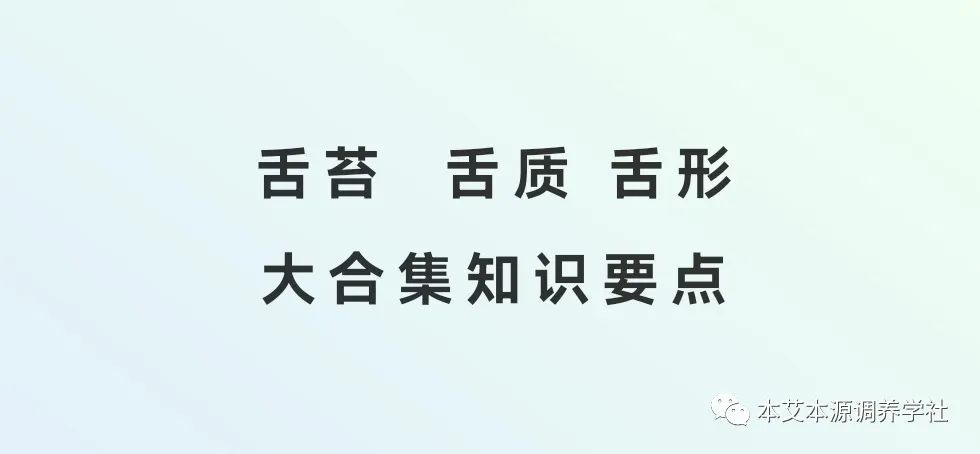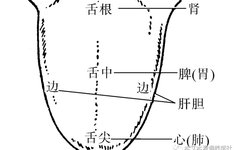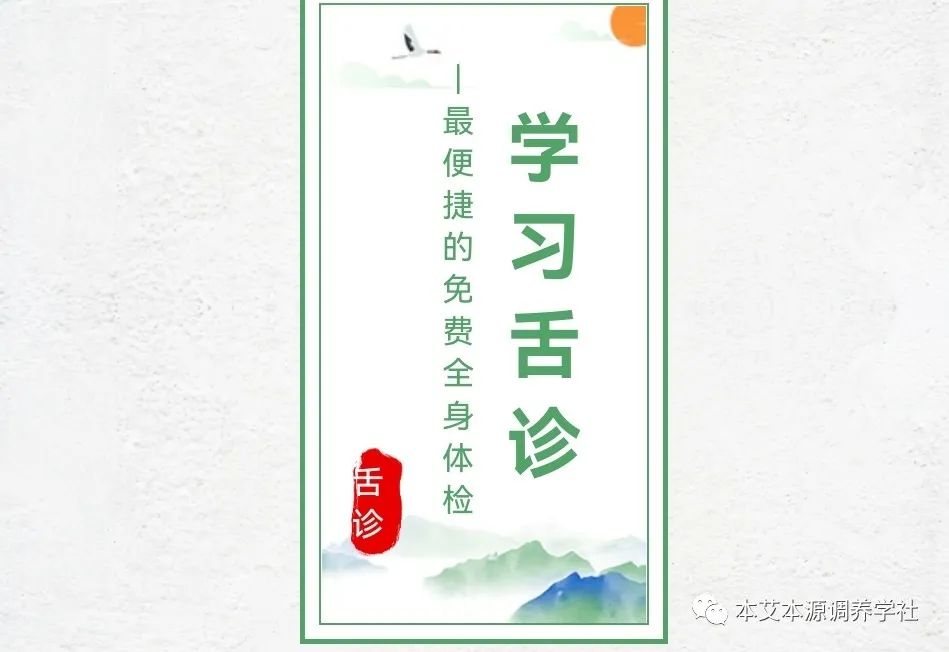
Everyone can quickly conduct a full-body check on themselves every day, and it’s free! How to do it?
Just stick out your tongue in front of the mirror every morning before brushing your teeth and take a good look at it. Isn’t that super simple?
Are you particularly curious about how to gaze at your tongue deeply?
Observing the tongue is a unique diagnostic method that assesses changes in the tongue’s quality, coating, shape, color, moisture, and dryness to understand the condition of the body.
So why can this small tongue tell us about the whole body? Traditional Chinese Medicine (TCM) theory holds that the tongue is the “sprout of the heart”; the heart governs blood vessels and houses the spirit. Therefore, changes in the tongue’s color can directly reflect the function of the heart in governing blood vessels;
The flexibility of the tongue and clarity of speech can also reflect the heart’s function in housing the spirit.
The tongue is the external manifestation of the spleen, and the tongue coating is formed by the stomach’s qi transforming the essence of food and drink, closely related to the spleen and stomach’s functions. Thus, changes in the tongue’s appearance can reflect the body’s nutritional and metabolic functions, as well as the state of qi and blood transformation.
Additionally, from a meridian perspective, the hand Shaoyin heart channel connects to the root of the tongue, the foot Taiyin spleen channel connects to the root and spreads beneath the tongue, the foot Jueyin liver channel connects to the root, and the foot Shaoyin kidney channel also connects to the root. This shows that the state of the internal organs and qi and blood can be assessed through tongue observation. The corresponding relationships between the tongue and the five organs in traditional tongue diagnosis (see Figure 1)
The tip of the tongue corresponds to the heart and lungs; the middle of the tongue corresponds to the spleen and stomach; the root of the tongue corresponds to the kidneys; the sides of the tongue correspond to the liver (gallbladder).
The tip, middle, and root of the tongue correspond to the upper, middle, and lower parts of the body.
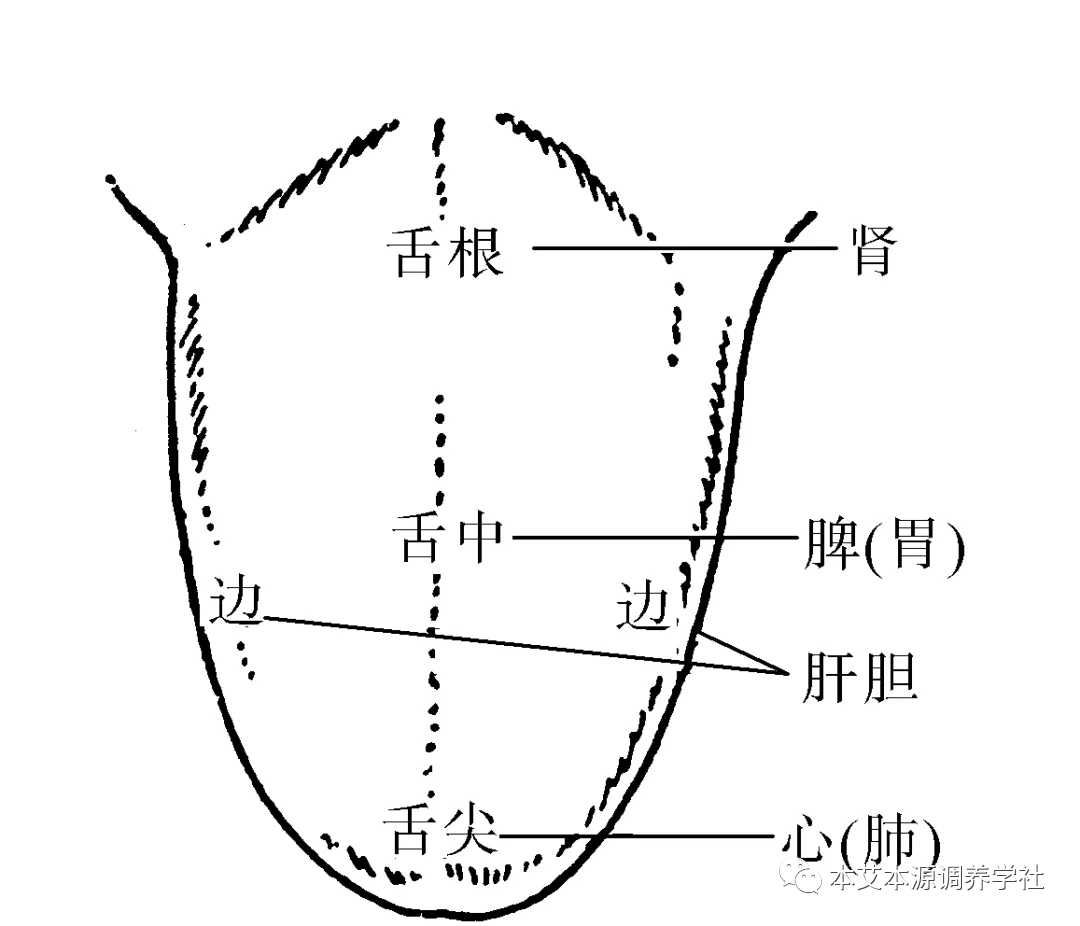
Moreover, holographic tongue diagnosis provides a more detailed correspondence between the body’s organs and the tongue. By carefully observing the tongue, one can perform a full-body scan similar to a CT scan.
Furthermore, changes in the tongue occur relatively quickly, and many functional rather than organic diseases can be detected through tongue observation, allowing for timely intervention to effectively prevent the occurrence and development of diseases, achieving the goal of treating diseases before they manifest.
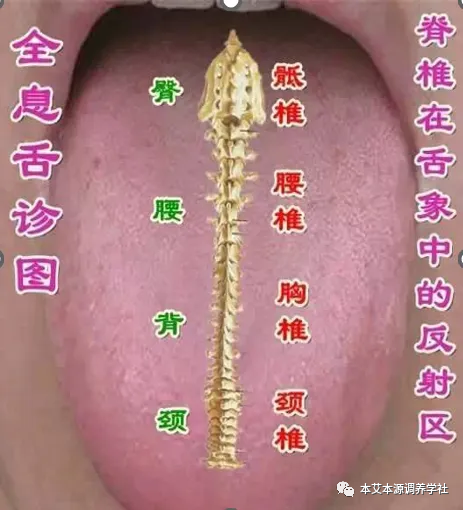
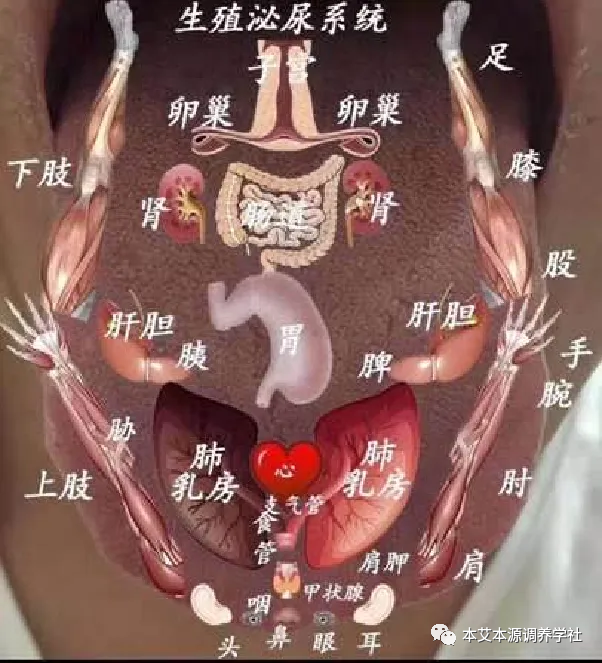
So what does a normal tongue look like? A normal tongue is light red and bright, with a moist quality, moderate size, soft and flexible, and a thin white coating that is even and moist. In simple terms, it is a light red tongue with a thin white coating. This tongue appearance indicates sufficient qi and blood, and harmonious organ function. It is seen in healthy individuals or in the early stages of external pathogenic diseases.
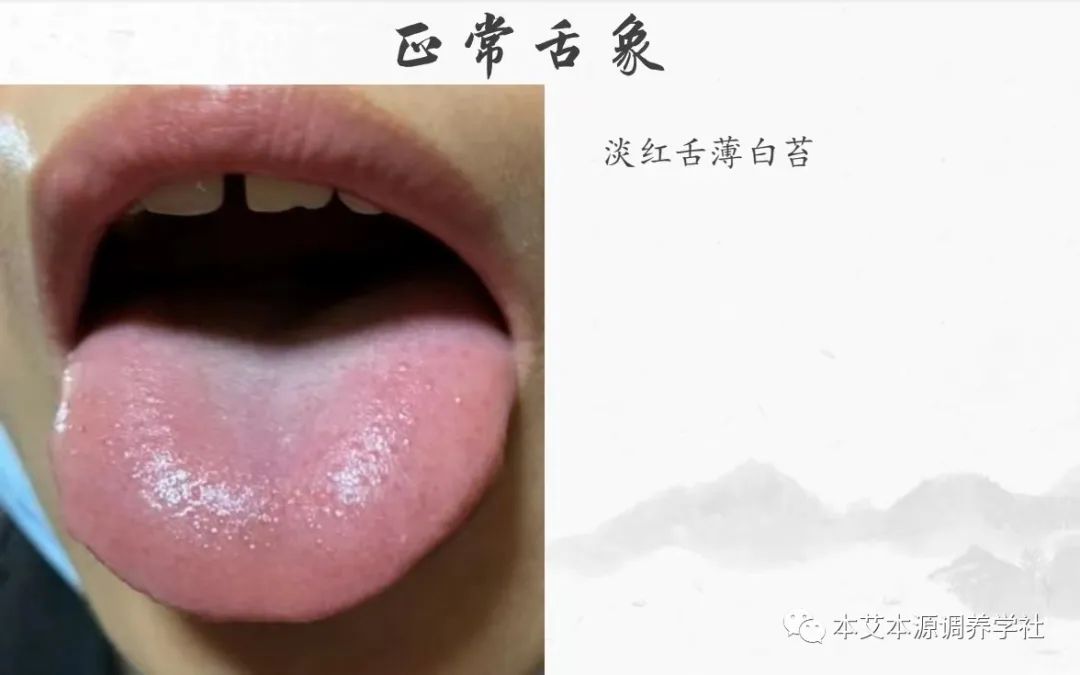
Tongue diagnosis mainly involves observing changes in the tongue’s quality and coating. Observing the tongue’s quality includes three aspects: tongue color, shape, and state, to assess the deficiency or excess of the organs and the state of qi and blood.
Observing the tongue coating includes two aspects: coating quality and color, to assess the nature of the pathogenic factors, the depth of the disease, and the changes of the pathogenic and healthy qi. When performing tongue diagnosis, a comprehensive analysis of the changes in tongue quality and coating is necessary to fully understand the condition and make an accurate diagnosis.
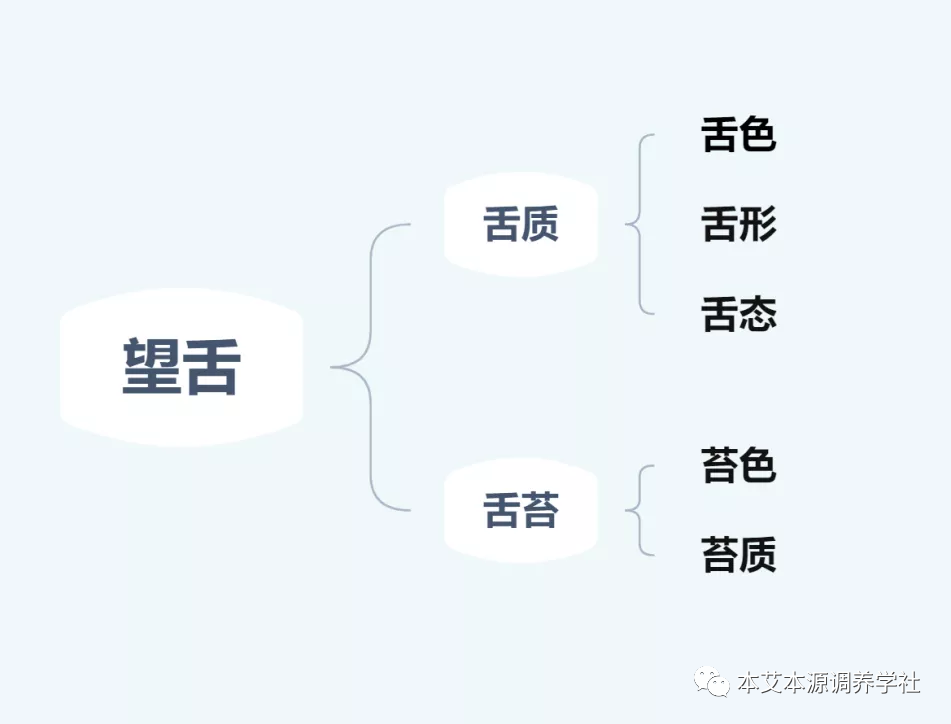
Observing the tongue quality—tongue color refers to the color of the tongue quality, which can be light red, pale white, red, crimson, or bluish-purple. Different tongue colors can indicate different bodily states.
1 Light Red Tongue
[Tongue Appearance Characteristics] The tongue color is light red and moist.

[Formation Mechanism] A light red tongue mainly reflects a physiological state of sufficient qi and blood, with strong stomach qi. Light red is the normal color reflected by blood on the tongue, and the bright and moist appearance indicates abundant stomach qi.
[Clinical Significance] A light red tongue indicates harmonious qi and blood, commonly seen in healthy individuals or in cases where the disease is mild and qi and blood are not damaged. In the early stages of a mild condition, if the tongue color is light red and moist, it suggests that yin and yang are balanced, qi and blood are not deficient, the condition is still mild, or it may be a good sign of recovery from illness.
2 Pale White Tongue
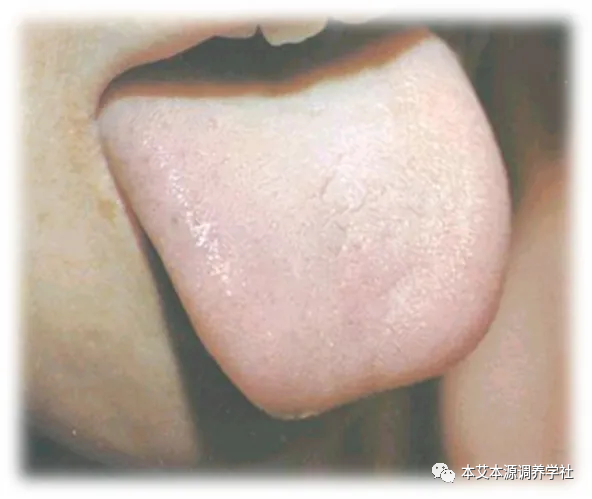
Pale white tongue [Tongue Appearance Characteristics] is lighter than the normal tongue color, with more white and less red, referred to as “pale white tongue”.
If the tongue color is pale white, lacking blood color and moisture, it is called “withered white tongue”.
[Formation Mechanism] Qi and blood deficiency leads to insufficient nourishment of the tongue; or yang qi is weak, unable to circulate blood, resulting in a pale tongue.
If the tongue color is pale white and the tongue body is thin, it indicates both qi and blood deficiency; if qi and blood deficiency is severe, the condition is critical, and the tongue lacks blood nourishment, resulting in a withered white appearance; if the tongue color is pale white, the tongue body is plump and moist, it often indicates yang qi deficiency leading to internal dampness.
[Clinical Significance] A pale white tongue indicates deficiency of both qi and blood or yang deficiency. Clinical manifestations of qi and blood deficiency include pale or sallow complexion, pale lips and nails, fatigue, dizziness, palpitations, dreaminess, and in women, scanty menstruation or amenorrhea. Yang deficiency is often characterized by pale complexion, cold intolerance, cool extremities, fatigue, clear and long urination, and loose stools. A withered white tongue indicates severe qi and blood deficiency.
[Mnemonic Verse]
Observe the tongue, quality and coating, coating color, quality, and shape.
Light red tongue with thin white coating, mild conditions are common in healthy individuals.
Pale white tongue indicates qi and blood deficiency, plump and tender indicates yang deficiency with internal dampness.
Withered white tongue indicates severe deficiency of blood and qi, do not neglect treatment.
3 Bluish-Purple Tongue
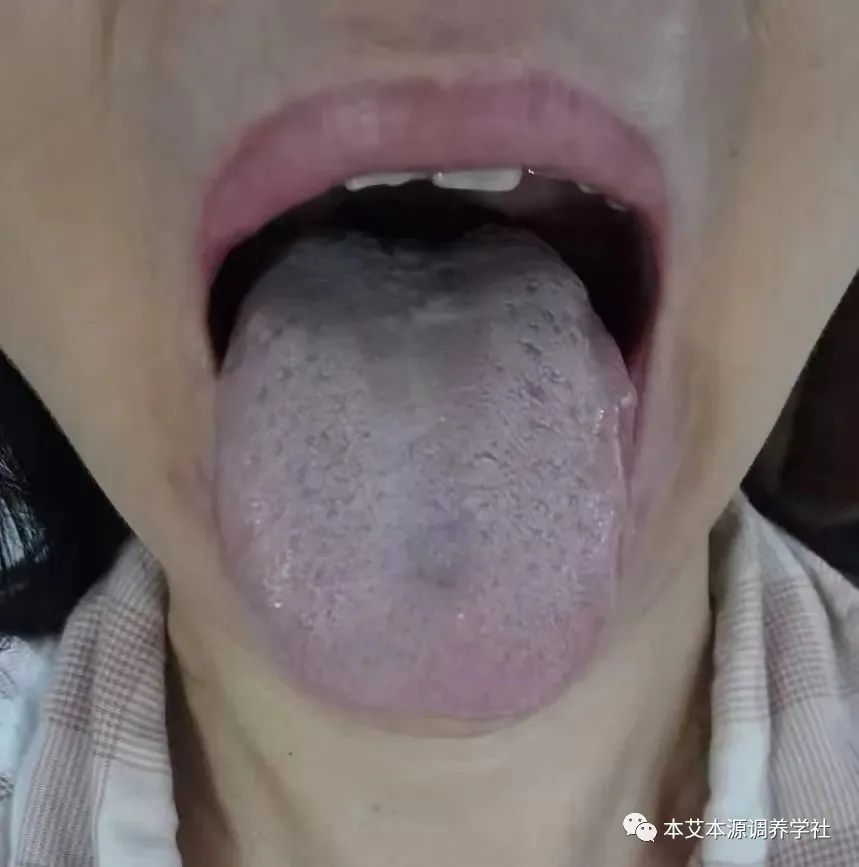
Bluish-Purple Tongue
[Tongue Appearance Characteristics] The entire tongue appears uniformly bluish or purple, or shows bluish-purple hues.
[Formation Mechanism] Stagnation of qi and blood leads to a bluish-purple tongue.
The depth of the bluish-purple color is related to the nature of cold and heat, and its formation is often seen in the following situations:
① Internal cold and heat stagnation, qi and blood are not flowing smoothly, resulting in a bluish-purple and moist tongue with a white and slippery coating.
② Excessive heat toxins deeply penetrating the blood, scorching the yin, leading to stagnation of qi and blood, resulting in a deep bluish-purple tongue with little dry coating.
③ The lungs fail to disperse or the liver fails to regulate, causing qi stagnation; or qi deficiency fails to promote blood flow, leading to blood stasis.
④ External trauma causing blood vessel damage, leading to bleeding and resulting in a bluish-purple tongue with dark spots.
[Clinical Significance] A bluish-purple tongue indicates poor blood circulation, commonly seen in blood stasis, heat, and cold syndromes.
If it is blood stasis syndrome, clinical manifestations include dark or bluish facial and lip color, subcutaneous and tongue surface bruising, and varying degrees of body pain, with fixed pain locations.
If it is a heat syndrome, clinical manifestations often include high fever at night, irritability, insomnia, and sometimes delirium or rashes.
If it is a cold syndrome, it may present as cold intolerance, joint pain, and fatigue.
Additionally, a bluish-purple tongue can also be seen in certain congenital heart diseases and drug or food poisoning.
[Mnemonic Verse]
Bluish-purple and deep crimson belong to extreme heat, light purple and moist indicate excessive cold.
Bluish-purple with dark spots indicates blood stasis, pain is fixed and blood stasis is evident.
4 Old Tongue
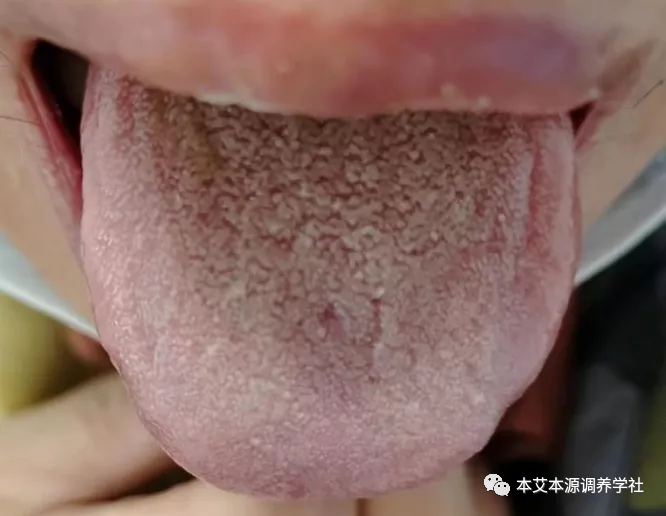
Old Tongue [Tongue Appearance Characteristics] The tongue quality is rough or shriveled, appearing aged and dark.
[Formation Mechanism] According to the “Clinical Tongue Examination Method: Examination of Tongue Deficiency and Excess”, it states: “If the substance is solid, its shape is firm and its color is dark… its qi is abundant, and its quality is solid.”
The formation of an old tongue is due to the presence of pathogenic qi in the body while the righteous qi is not deficient, leading to a struggle between the pathogenic and righteous qi, resulting in the loss of body fluids. This loss of fluids is reflected on the tongue, resulting in a shriveled and aged appearance. However, there may be exceptions, so it is necessary to combine tongue color, coating, and other factors for comprehensive judgment.
[Clinical Significance] An old tongue often indicates an excess syndrome.
5 Tender Tongue
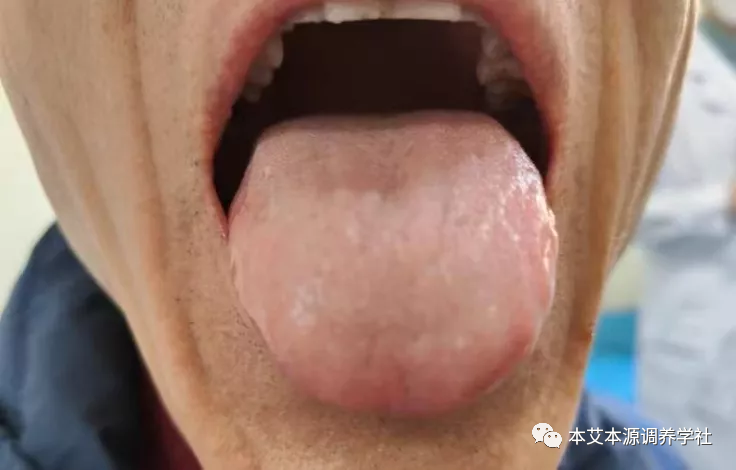
Tender Tongue [Tongue Appearance Characteristics] The tongue quality is delicate, plump, and tender, with a light color.
[Formation Mechanism] According to the “Clinical Tongue Examination Method: Examination of Tongue Deficiency and Excess”, it states: “If it is deficient, its body is plump and tender.” Qi is still immature, and its quality is still tender.
A delicate tongue with fine texture is often due to deficiency of qi and blood, or yang deficiency, leading to abnormal distribution of body fluids; or internal dampness can also manifest as a tender tongue. In addition to the above, there are many other causes for a tender tongue. There may also be exceptions, so it is necessary to combine tongue color, coating, and other factors for comprehensive judgment.
[Clinical Significance] A tender tongue often indicates a deficiency syndrome.
[Mnemonic Technique]
“Old” — Old tongue often indicates an excess syndrome.
“Tender” — Tender tongue often indicates a deficiency syndrome.
6 Enlarged Tongue
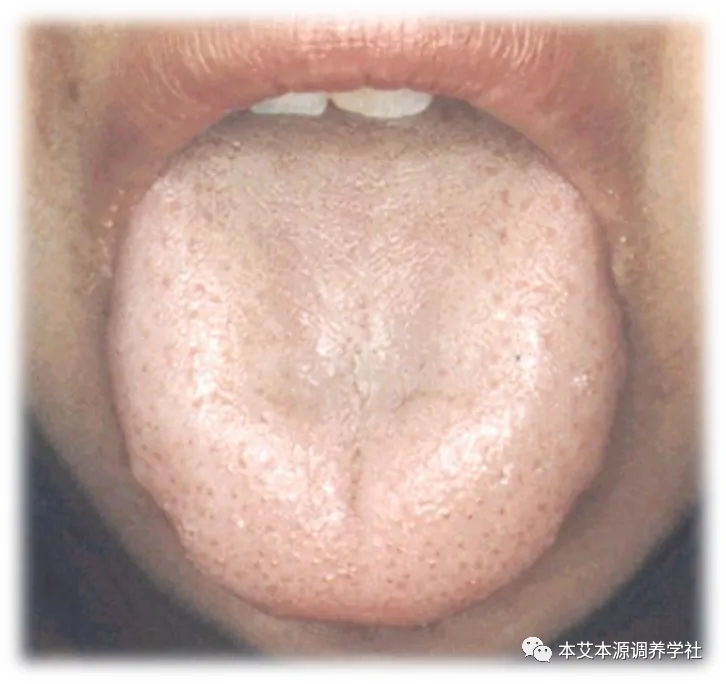
Enlarged Tongue
[Tongue Appearance Characteristics] The tongue body is larger and thicker than a normal tongue, filling the mouth.
[Formation Mechanism] Often due to spleen and kidney yang deficiency, leading to abnormal qi transformation, weakened yang’s driving force, and obstruction of fluid distribution, resulting in internal dampness.
[Clinical Significance] An enlarged tongue indicates phlegm and dampness retention, with clinical manifestations including cough, wheezing, phlegm production, edema, chest tightness and pain, abdominal distension, loss of appetite, and even confusion.
7 Swollen Tongue
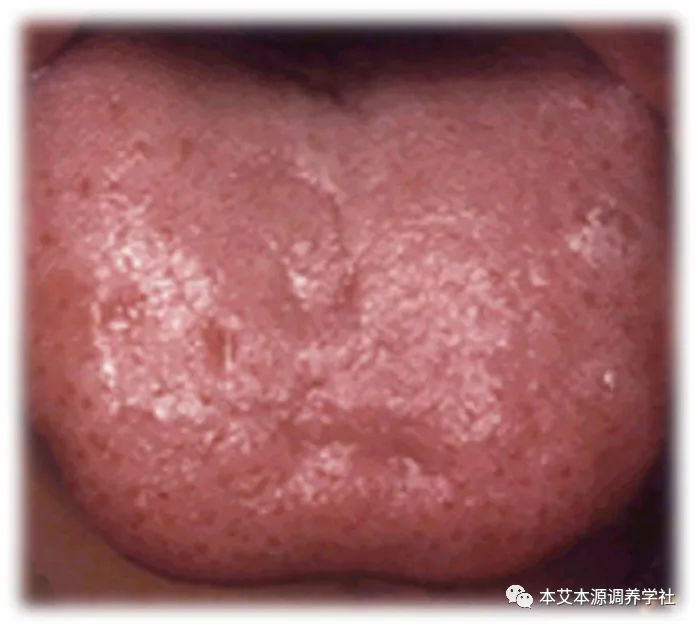
Swollen Tongue
[Tongue Appearance Characteristics] The tongue body is swollen and fills the mouth, even to the point of being unable to close.
[Formation Mechanism] A swollen tongue that is red indicates excessive heat in the heart and spleen, qi and blood rising, and heat toxins obstructing; or habitual alcohol consumption combined with warm diseases, leading to heat toxins obstructing; or poisoning causing blood stagnation.
[Clinical Significance] A swollen tongue indicates alcohol or heat toxins rising, with clinical manifestations including loss of appetite, abdominal distension, nausea, bitter mouth, loss of appetite, body heat, sweating without relief, scanty yellow urine, and loose stools.
8 Thin Tongue
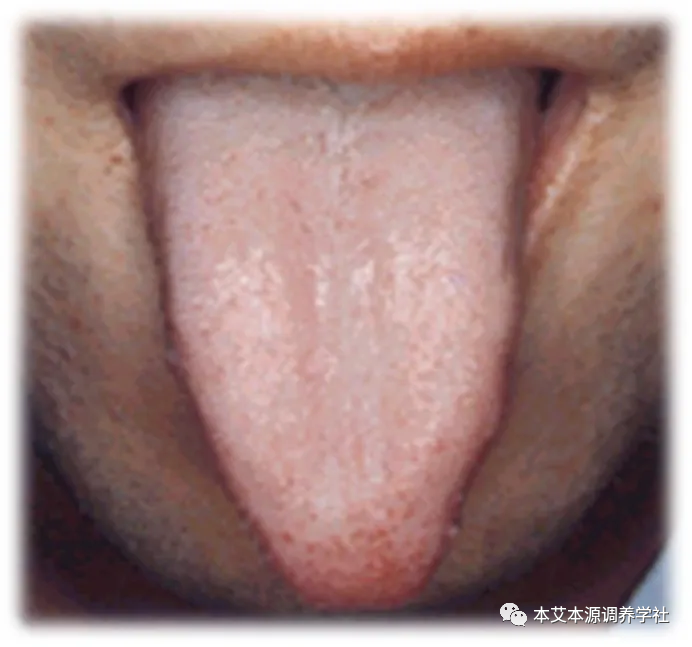
Thin Tongue
[Tongue Appearance Characteristics] The tongue body is thinner and smaller than a normal tongue.
[Formation Mechanism] Often due to insufficient qi, blood, and body fluids, leading to inadequate nourishment of the tongue. A thin and pale tongue often indicates deficiency of both qi and blood; a thin and red tongue with little or no coating is often seen in cases of yin deficiency with excessive heat.
[Clinical Significance] A thin tongue indicates deficiency of both qi and blood, or excessive heat due to yin deficiency. Clinical manifestations of qi and blood deficiency include pale or sallow complexion, pale lips and nails, fatigue, dizziness, palpitations, dreaminess, and in women, scanty menstruation or amenorrhea.
Excessive heat due to yin deficiency may present as red cheeks, tidal fever, night sweats, heat in the palms and soles, irritability, dry throat, scanty and dark urine, and constipation.
[Mnemonic Verse]
An enlarged tongue fills the mouth, indicating phlegm and dampness retention.
A swollen tongue is red and cannot retract, indicating qi and blood rising with heat toxins.
A thin and small tongue indicates deficiency syndrome, with qi and blood deficiency needing to be identified.
9 Punctate Tongue

Punctate tongue [Tongue Appearance Characteristics] refers to the presence of many red spots protruding from the tongue surface, resembling strawberry fruit. The fungiform papillae are enlarged and increased in number, with congestion and edema. If the red spots are located at the tip and sides of the tongue, it is called red dot tongue; if the fungiform papillae are enlarged and pointed, resembling thorns, it is called thorny tongue.
[Formation Mechanism] Heat rising.
[Clinical Significance] A red dot tongue indicates blood heat or internal heat in the organs, while a thorny tongue indicates severe blood heat or excessive internal heat in the organs. Bright red indicates blood heat, deep crimson indicates severe heat, and white indicates edema. Based on the location of the thorns, one can discern the location of the heat.
If the thorns are at the tip of the tongue, it often indicates heat in the heart and lungs, presenting as sore throat and irritability.
If the thorns are on the sides of the tongue, it often indicates excessive heat in the liver and gallbladder, presenting as bitter mouth, dry mouth, and irritability.
If the thorns are in the middle of the tongue, it indicates excessive heat in the stomach and intestines, presenting as increased appetite, bad breath, and swollen gums.
[Mnemonic Verse]
Punctate tongue is red like strawberries, indicating heat rising in the blood and organs.
Deep crimson indicates severe blood heat, while white indicates edema.
10 Cracked Tongue
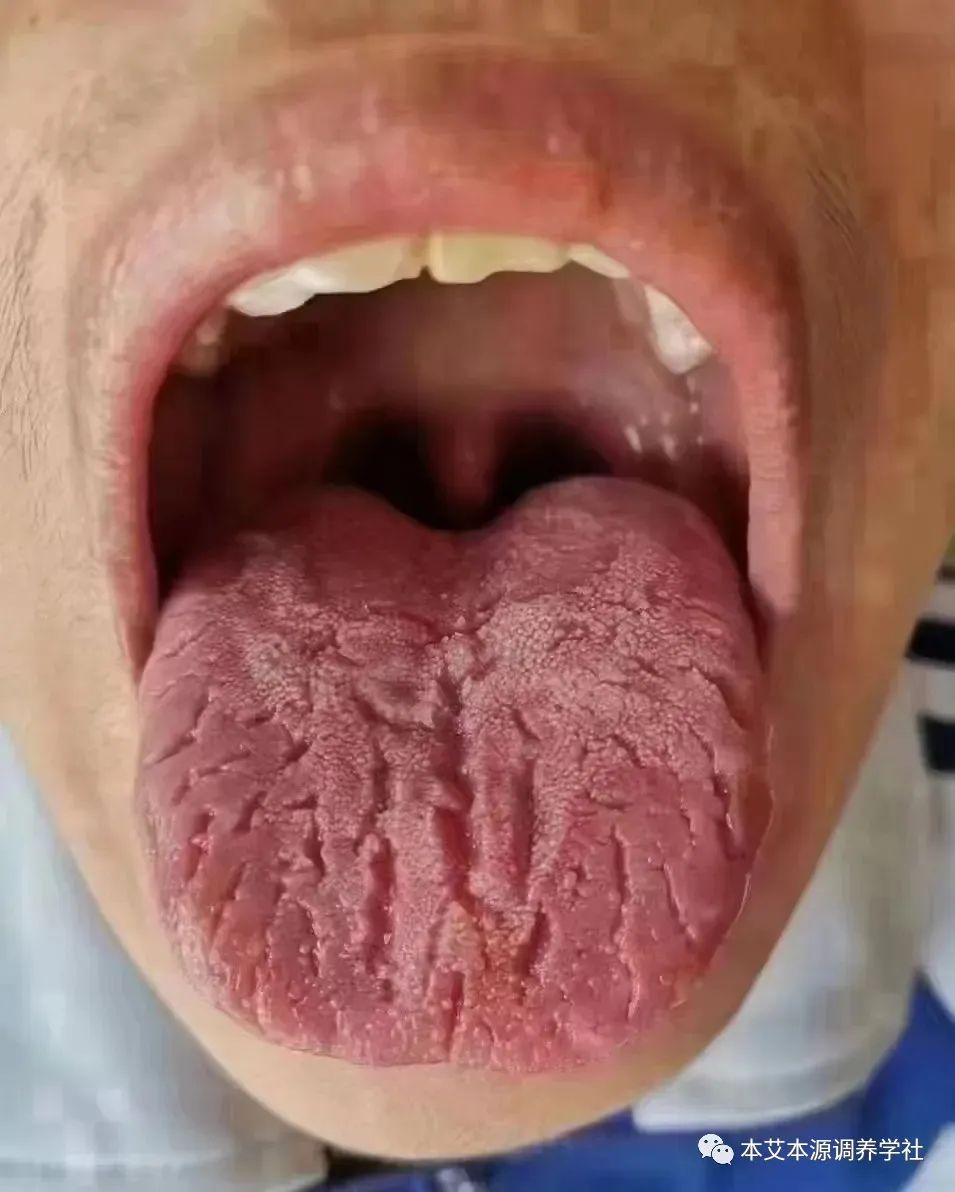
[Tongue Appearance Characteristics] The tongue surface has cracks of varying depths and shapes, referred to as cracked tongue.
[Formation Mechanism] A cracked tongue is often due to deficiency of yin blood and invasion of dampness. Excessive heat injures yin, leading to loss of body fluids that cannot nourish the tongue surface.
Or blood deficiency fails to moisten the tongue, resulting in a cracked tongue.
[Clinical Significance]
1. Excessive heat injuring yin often presents as a red tongue with cracks, accompanied by thirst, irritability, tidal fever, and night sweats;
2. Blood deficiency failing to moisten often presents as a pale white tongue with cracks, accompanied by pallor, dizziness, and insomnia;
3. Spleen deficiency with dampness often presents as a pale white, plump tongue with teeth marks and cracks, accompanied by loose stools, lack of appetite, and sallow complexion.
[Mnemonic Verse]
If cracks are seen on the tongue, red and cracked indicate heat injuring yin.
Pale white and cracked indicate blood deficiency, while pale and plump with cracks indicate spleen dampness.
11 Mirror Tongue
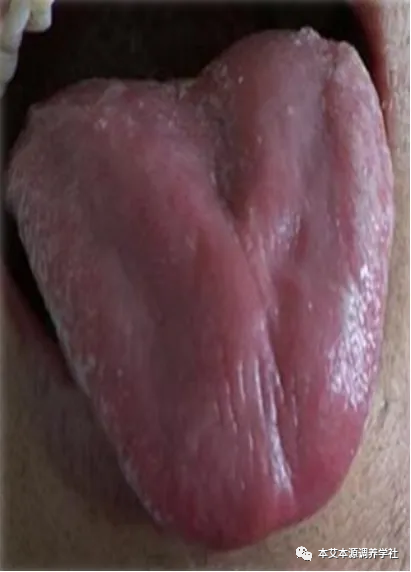
[Tongue Appearance Characteristics] The tongue surface is shiny like a mirror, smooth, and without coating.
[Formation Mechanism] The tongue coating is formed by the stomach qi steaming the essence of food and drink onto the tongue surface, corresponding to the spleen and stomach’s functions. If the stomach yin is depleted, and the stomach qi is severely damaged, it cannot rise to the tongue, resulting in a complete loss of tongue coating, forming a mirror tongue.
[Clinical Significance]
① If the tongue is pale white, shiny like a mirror, and lacks blood color, it indicates damage to the spleen and stomach, with severe blood deficiency, and the yang qi is about to collapse, presenting as cold extremities, pale complexion, and weak pulse.
② If the tongue is deep crimson without coating and shiny like a mirror, it indicates depletion of stomach and kidney yin, presenting as dry mouth and throat, discomfort in the stomach, and hidden stomach pain.
[Mnemonic Verse]
Pale white and shiny mirror tongue indicates spleen and stomach damage,
Deep crimson and shiny mirror tongue indicates depletion of stomach and kidney yin.
12 Red Tongue
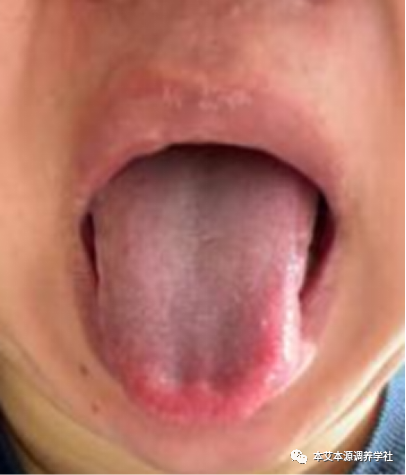
[Tongue Appearance Characteristics]
The tongue is redder than normal, even bright red.
[Formation Mechanism]
Due to heat promoting accelerated blood circulation, the tongue’s vessels become engorged; or due to deficiency of yin fluids, leading to insufficient nourishment and virtual fire rising, resulting in a bright red tongue.
According to the “Tongue Diagnosis in Febrile Diseases”, “A red tongue indicates heat accumulating in the heart and stomach, reaching the surface from within.” This indicates that heat in the heart and stomach will manifest as redness of the tongue.
[Clinical Significance]
A red tongue indicates heat (excess heat, deficiency heat) syndrome.
① A slightly red tongue, or only the tip and edges are slightly red, often indicates the initial stage of an external wind-heat syndrome, with symptoms such as headache, sweating, and aversion to wind.
② A bright red tongue with thorns, or with a thick yellow coating, often indicates an excess heat syndrome, with symptoms such as high fever, sweating, aversion to heat, and thirst.
③ A bright red tongue with little coating, or with cracks, or bright red without coating, indicates a deficiency heat syndrome, with symptoms such as heat in the palms and soles, spontaneous sweating, irritability, and insomnia.
④ A red tip of the tongue often indicates heart fire rising; a red edge of the tongue often indicates heat in the liver channel.
13 Crimson Tongue
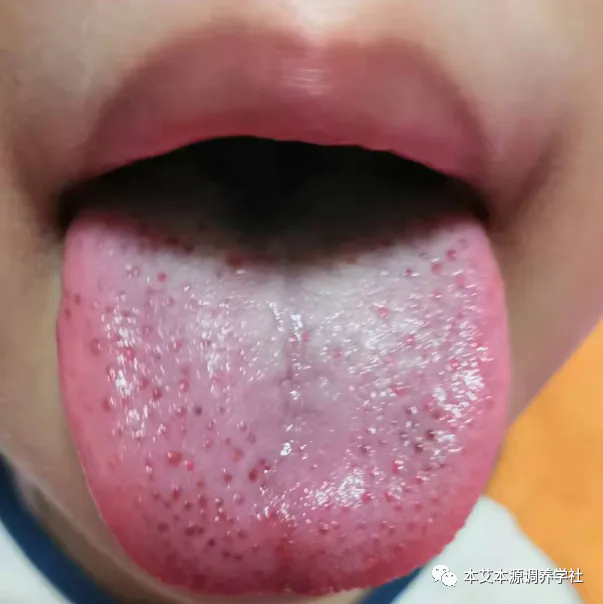
[Tongue Appearance Characteristics]
A crimson tongue is redder than a normal tongue, even bright red, and the crimson tongue is darker or slightly dark red.
[Clinical Significance]
A crimson tongue indicates heat syndrome.
Heat can be divided into excess and deficiency. A bright red tongue with thorns, or with a thick yellow coating, often indicates an excess heat syndrome, with symptoms such as high fever, irritability, and thirst.
A bright red tongue with little coating, or with cracks, or bright red without coating, indicates a deficiency heat syndrome, with symptoms such as afternoon fever, heat in the palms and soles, and insomnia.
The red areas indicate the affected organs. A red tip of the tongue often indicates heart fire rising, with symptoms such as mouth sores, irritability, and insomnia.
A red edge of the tongue often indicates heat in the liver channel, with symptoms such as bitter mouth and irritability.
[Mnemonic Verse]
A red tongue indicates heat, and the deeper the heat, the more crimson it becomes.
Heat entering the blood and damaging yin, excess heat and deficiency heat need to be distinguished.
14 Teeth Marked Tongue

[Tongue Appearance Characteristics]The tongue body has indentations from teeth along the edges.
[Formation Mechanism]
① Teeth marks on the tongue edges are often due to the tongue body being enlarged and pressed by the teeth, indicating spleen deficiency that cannot transform dampness, leading to dampness obstructing the tongue and causing it to enlarge, resulting in teeth marks, often seen with an enlarged tongue.
② There may also be teeth marks on a tongue that is not enlarged, indicating a tender tongue.
③ If there are dental appliances, irregular gums, or if the patient has a habit of biting their tongue, it can cause physiological teeth marks on the tongue, which should not be considered pathological signs.
[Clinical Significance]
Indicates spleen deficiency, excessive dampness, or insufficient qi and blood.
① A pale, plump, and moist tongue with teeth marks often indicates excessive cold dampness, or yang deficiency with internal dampness, presenting as loss of appetite, abdominal heaviness, reduced urination, and loose stools.
② A light red tongue with teeth marks often indicates spleen deficiency or qi deficiency, commonly presenting as reduced appetite, abdominal distension after eating, and loose stools.
③ A red and swollen tongue with teeth marks indicates internal damp-heat obstruction, with clinical manifestations including body heat, heaviness, loose stools, and scanty yellow urine.
④ A light red and tender tongue with slight teeth marks may indicate congenital teeth marks; if seen during illness, it indicates a milder condition, often seen in children or those with reduced food intake.
[Mnemonic Verse]
Teeth marks indicate spleen deficiency and excessive dampness,
Plump and moist indicates yang deficiency and cold.
Spleen deficiency and qi deficiency indicate a light red color,
Red and swollen with teeth marks indicate damp-heat obstruction.
1 Bag Tongue
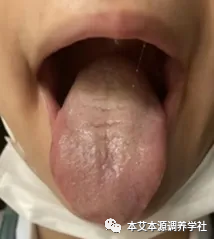
[Tongue Appearance Characteristics]The root of the tongue is contracted, while the tip is enlarged.
[Formation Mechanism] The root of the tongue represents the lower jiao (kidneys, bladder, large and small intestines), closely related to the kidneys. Kidney essence deficiency can lead to contraction of the tongue root, forming a bag tongue.
[Clinical Significance] Indicates kidney deficiency (kidney insufficiency).
Because the kidneys govern essence, growth, development, and reproduction, they regulate water metabolism, and their manifestation is in hair, opening to the ears and the two lower orifices, and they govern urination. Therefore, kidney essence deficiency in children may manifest as growth retardation, with symptoms such as five delays, five softness, sparse hair, and low intelligence. In adults, it may present as premature aging, with symptoms such as physical decline, cognitive decline, loose teeth, lumbar and knee weakness, tinnitus, hearing loss, or reproductive dysfunction, such as decreased sexual function, scant menstruation, amenorrhea, and infertility.
[Mnemonic Verse]
Bag tongue has a small root and a large tip, indicating kidney essence deficiency and tongue root contraction.
Children with growth retardation, adults with premature aging and reproductive weakness.
Tongue Coating Diagnosis
The tongue coating refers to the coating material attached to the tongue surface, while the coating quality refers to the texture and morphology of the coating.
It mainly includes changes in thickness, moisture, greasiness, peeling, partiality, and authenticity, with different coating qualities indicating different changes in bodily health.
Tongue coating—coating quality includes thin and thick coatings, as well as moist and dry coatings.
Thin and Thick Coatings
[Tongue Appearance Characteristics] The thickness of the tongue coating is determined by whether the tongue body can be “seen” or “not seen” through the coating. If the tongue quality can be faintly seen through the coating, it is called “thin coating”.
If the tongue quality cannot be seen through the coating, it is called “thick coating”.
[Formation Mechanism] Thin coating is one of the manifestations of normal tongue coating, with a thin and even coating, or slightly thicker in the middle, with moderate moisture, indicating normal tongue coating;
If seen during illness, it suggests a mild condition. Thick coating is caused by the stomach qi combined with dampness, phlegm, food stagnation, or heat evil, steaming onto the tongue surface. The “Tongue Diagnosis Guide” states: “Thin coating indicates insufficient form and qi; thick coating indicates excess pathogenic qi.”
[Clinical Significance] The thickness of the tongue coating can reflect the rise and fall of pathogenic and healthy qi. A newly emerging external pathogenic disease at the surface, or an early internal injury, with the stomach qi not yet damaged, can be seen with thin coating. A thick coating, especially at the root of the tongue, often indicates that external pathogenic evil is strong within, or that there is accumulated food in the stomach and intestines, or that phlegm and dampness are stagnant, indicating a more severe condition.
A transition from thin to thick coating suggests that pathogenic qi is increasing, or that surface evil has entered the interior, indicating disease progression;
A transition from thick to thin coating, or the reappearance of a new thin white coating on the tongue, suggests that healthy qi has overcome the evil, or that internal evil has dissipated and is being expelled, indicating recovery.
The transition of the tongue coating thickness is generally a gradual process; if thin coating suddenly becomes thick, it suggests that pathogenic qi is extremely strong and rapidly entering the interior; if the coating suddenly disappears, leaving the tongue without new coating, it indicates that the righteous qi cannot overcome the evil, or that the stomach qi has been completely exhausted.
Moist and Dry Coatings
[Tongue Appearance Characteristics] A moist coating has sufficient moisture, while a dry coating is dry and may even crack, referred to as “dry coating”.
A rough coating that feels coarse to the touch is referred to as “rough coating”.
[Formation Mechanism] A moist coating is one of the manifestations of normal tongue coating, indicating that body fluids are adequately present on the tongue. If seen during illness, it suggests that body fluids are not damaged, such as in wind-cold exterior syndrome, dampness, food stagnation, or blood stasis, all of which can present with a moist coating.
A slippery coating often indicates the invasion of cold and dampness, or that yang qi is weak and cannot transform body fluids, leading to phlegm and dampness forming on the tongue. A dry coating indicates that body fluids have been damaged.
For example, high fever, excessive sweating, vomiting, or diarrhea can lead to insufficient body fluids, causing the coating to lose moisture and become dry. If high fever injures body fluids, the tongue is often red and aged;
If yin fluids are depleted, the tongue is often thin and small;
If yang is deficient and cannot transform fluids, the tongue is often pale white and dry, with thirst but little desire to drink.
[Clinical Significance] The moisture and dryness of the tongue coating can reflect the balance of body fluids. A moist coating indicates that body fluids are not damaged, which can also be seen in healthy individuals. A dry coating indicates that heat is excessive and body fluids are damaged, or that yin fluids are depleted, presenting with symptoms such as thirst, dry skin, dry lips, dry throat, scanty urination, and constipation.
A slippery coating indicates that dampness is retained internally, suggesting phlegm and dampness; if it is phlegm, symptoms may include excessive phlegm production, chest tightness, and obesity;
If it is dampness, symptoms may include swelling of the limbs and difficulty urinating. A rough coating indicates a severe condition of heat damaging body fluids, which can develop from a dry coating, often seen in severe cases of heat damaging body fluids.
The transition of the tongue coating from moist to dry indicates that heat is severe and body fluids are damaged, or that body fluids are not being distributed properly; the transition from dry to moist indicates that heat has receded and body fluids have recovered, or that dampness has transformed.
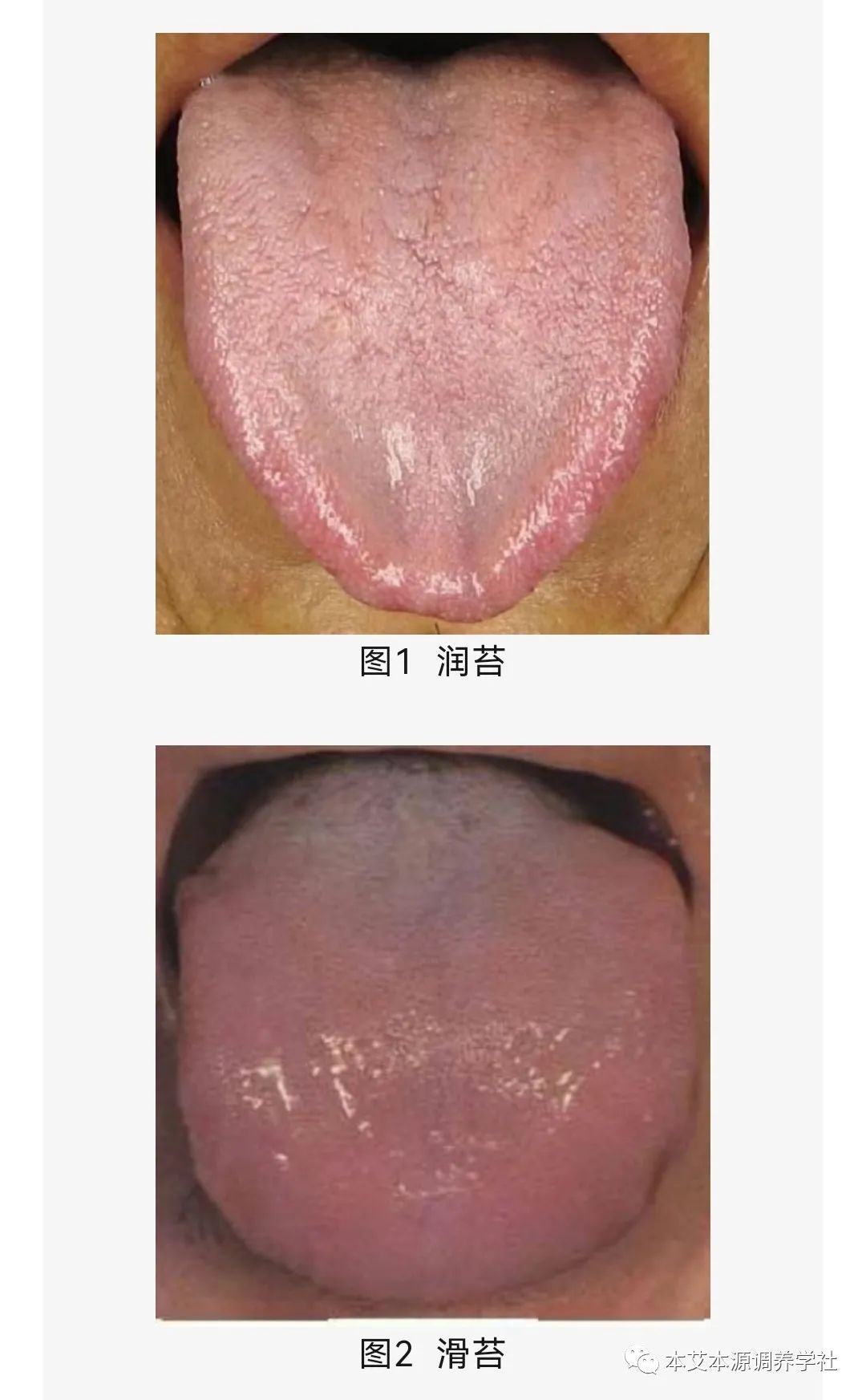
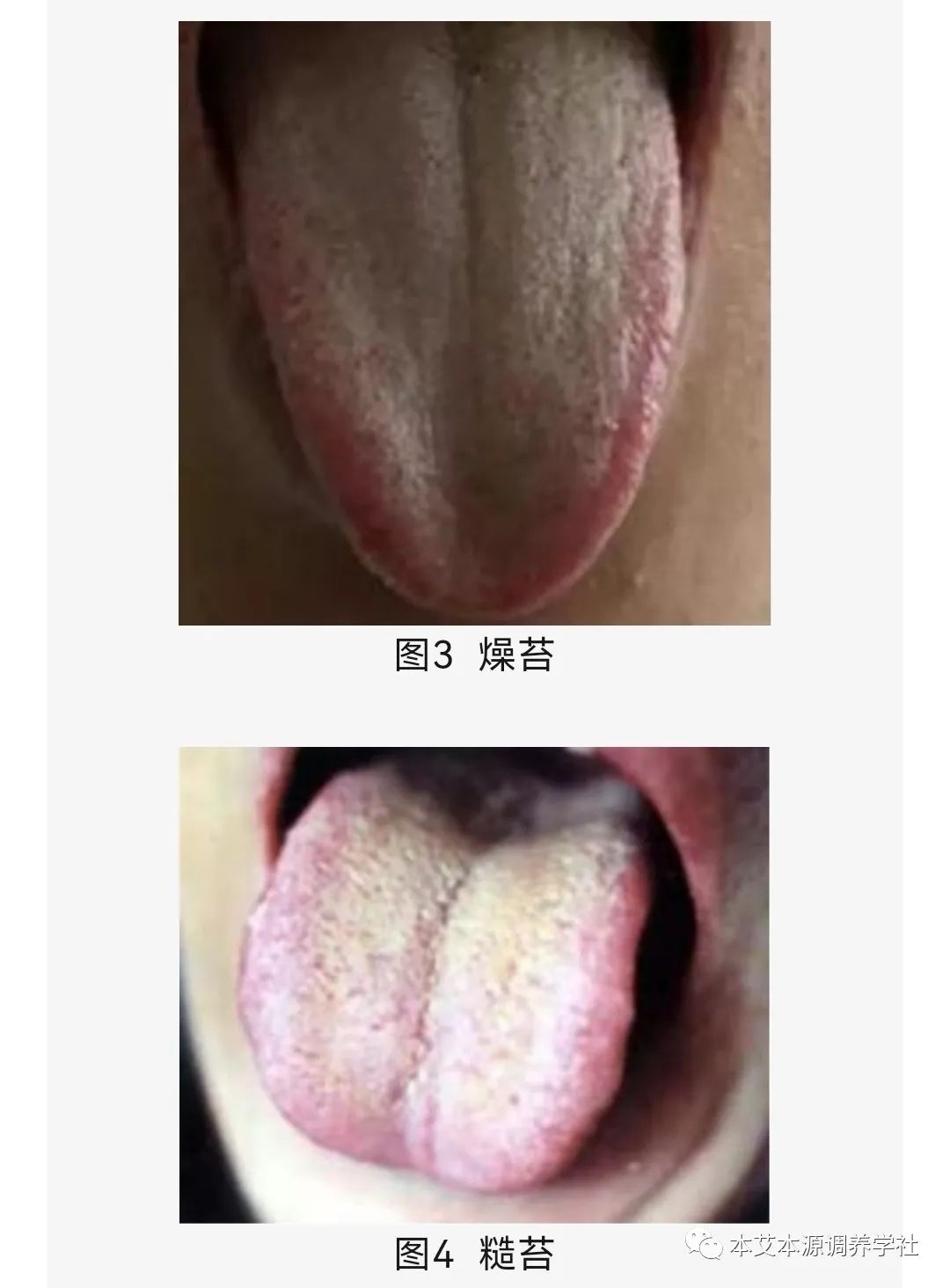
[Mnemonic Verse]
Thin coating indicates surface and healthy individuals, thick coating indicates internal heat, phlegm, and food stagnation.
Slippery indicates internal dampness and phlegm, dry indicates excessive heat damaging body fluids.
Observing Tongue State
The tongue state refers to the dynamic quality of the tongue. A tongue that moves flexibly and can extend and retract freely indicates a normal tongue state, suggesting sufficient qi and blood, smooth meridian flow, and healthy organ function.
Common pathological tongue states include a weak, stiff, trembling, deviated, protruding, and shortened tongue.
We will summarize six types of tongue states: deviated, trembling, protruding, shortened, weak, and stiff.
Deviated Tongue
[Tongue Appearance Characteristics] When extending the tongue, it deviates to one side, either left or right.
[Clinical Significance]
Often seen in stroke, aphasia, or as a precursor to stroke.
Aphasia, also known as wind phlegm, is a TCM term referring to a condition after a stroke where wind phlegm disturbs the body, obstructing the meridians, or kidney deficiency leading to essence deficiency, resulting in the inability to speak after a stroke, with symptoms such as inability to use the limbs, which is similar to what Western medicine refers to as post-stroke sequelae.
Trembling Tongue
[Tongue Appearance Characteristics]The tongue trembles and cannot be controlled, often seen in internal wind of the liver. In mild cases, the tongue trembles when extended; in severe cases, it trembles even when not extended.
[Clinical Significance]This indicates internal wind of the liver. Clinical manifestations may include dizziness, headache, tremors of the limbs, numbness, unsteady gait, and in severe cases, sudden fainting, loss of consciousness, facial drooping, and hemiplegia.
Protruding Tongue
[Tongue Appearance Characteristics]The tongue extends outside the mouth and cannot retract, referred to as “protruding tongue”; repeatedly extending the tongue and retracting, or repeatedly licking the lips and corners of the mouth, is referred to as “licking tongue”.
[Clinical Significance]This indicates heat in the heart and spleen (the tongue color is often red). Common clinical manifestations include abscesses, skin infections, febrile diseases, intestinal abscesses, blood heat bleeding, fluid loss, and severe cases may lead to confusion, delirium, and convulsions.
Shortened Tongue
[Tongue Appearance Characteristics] The tongue body is rolled up, short, and tight, unable to extend, and may not even reach the teeth.
[Clinical Significance] This indicates cold congealing the meridians, often accompanied by clinical manifestations such as pale complexion, cold intolerance, cold pain, tightness, clear and long urination, and loose stools; or qi and blood deficiency, often accompanied by clinical manifestations such as pale complexion, pale lips and nails, fatigue, shortness of breath, lack of energy, palpitations, dreaminess, weight loss, and numbness of the limbs.
In cases of liver wind with phlegm, common clinical manifestations may include reduced appetite, abdominal distension, muscle stiffness, loose stools, swelling, dizziness, heavy head, numbness of the limbs, and in severe cases, hemiplegia, confusion, and delirium; or extreme heat causing wind, common clinical manifestations may include thirst, dry skin, dry lips, dry throat, scanty urination, and in severe cases, dry skin, cracked lips, and irritability.
Weak Tongue
[Tongue Appearance Characteristics] The tongue body is weak and lacks strength, unable to extend or retract freely.
[Clinical Significance] This often indicates injury to yin or deficiency of both qi and blood. Clinical manifestations may include dry lips, dry skin, dry stools, thirst, weakness in the lower back and knees, heat in the palms and soles, tidal fever, and night sweats; or general weakness, fatigue, shortness of breath, pale complexion, sallow skin, dizziness, palpitations, and in women, scanty menstruation, delayed menstruation, or amenorrhea.
Stiff Tongue
[Tongue Appearance Characteristics] The tongue lacks flexibility, is rigid, or is stiff and cannot move.
[Clinical Significance] This is often seen in heat entering the heart, or due to high fever damaging body fluids or phlegm obstructing the meridians. Clinical manifestations may include dry lips, dry skin, dry stools, thirst, weakness in the lower back and knees, heat in the palms and soles, tidal fever, and night sweats; or facial drooping, dizziness, headache, facial drooping, limb spasms, hemiplegia, delirium, and confusion.
[Mnemonic Verse]
Deviated tongue indicates stroke or aphasia,
Trembling tongue indicates internal wind,
Protruding tongue indicates heat in the heart and spleen,
Shortened tongue indicates severe conditions,
Weak tongue indicates deficiency of yin or qi and blood,
Stiff tongue indicates heat entering the heart.
Observing the Under-Tongue Vessels
The under-tongue vessels are two longitudinal vessels located on either side of the lingual frenulum, which can be easily observed and can intuitively reflect the state of qi and blood in the body. Today, let’s learn how to observe the under-tongue vessels.
Observation Method: Have the patient open their mouth, lift the tongue towards the palate, and lightly touch the upper palate with the tip of the tongue without excessive force, allowing the tongue to relax naturally, exposing the under-tongue vessels.
First, observe the length, thickness, shape, color, and any abnormal changes such as distension, curvature, etc., then observe the surrounding small vessels for any abnormalities in color or shape.
1. Normal Under-Tongue Vessels:
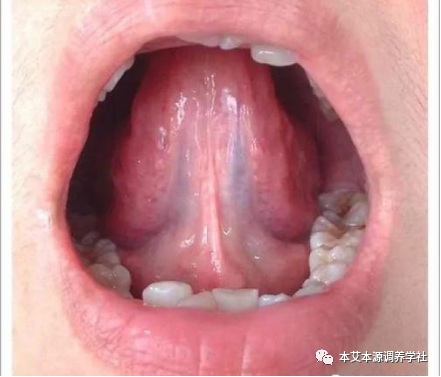
Hidden under the tongue, with a diameter not exceeding 2.7mm, a length not exceeding 3/5 of the line connecting the tip of the tongue to the under-tongue meat mound, and a dark red color. The vessels should not be distended, tightly bound, curved, or hyperplastic, and are mostly single.
2. Abnormal Under-Tongue Vessels:
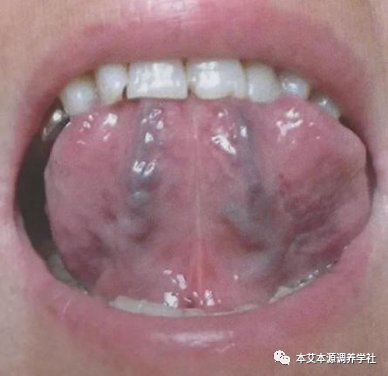
The under-tongue vessels are thickened or distended.
[Tongue Appearance Characteristics] The under-tongue vessels are thickened or distended, with colors ranging from bluish-purple, crimson, dark crimson, or purple-black, or the small under-tongue vessels may appear as a dark red or purple network, or the vessels may be distended like purple beads of varying sizes.
[Formation Mechanism] The under-tongue vessels correspond to the qi and blood in the body; thickened or distended vessels indicate excessive qi and blood or stagnation of qi and blood leading to purple-red coloration.
[Clinical Significance] This often indicates blood stasis, with clinical manifestations including stabbing pain, tenderness, swelling, bleeding, dark purple lips, tongue, and nails, irritability, menstrual pain, amenorrhea, chest tightness, and chest pain.
The under-tongue vessels are short and thin.
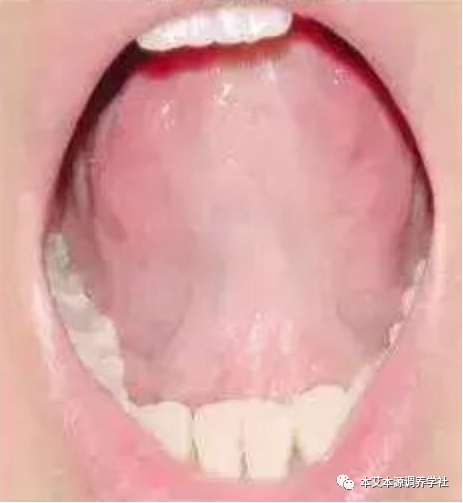
[Tongue Appearance Characteristics] If the under-tongue vessels are short and thin, with surrounding small vessels not prominent, and the color is pale.
[Formation Mechanism] Short and thin under-tongue vessels with pale color indicate insufficient qi and blood in the body.
[Clinical Significance] This often indicates qi and blood deficiency, with clinical manifestations including fatigue, weakness, palpitations, pale or sallow complexion, dry skin, sparse hair, blurred vision, numbness of the limbs, insomnia, dreaminess, forgetfulness, and mental confusion.
[Mnemonic Verse]
Under-tongue vessels reflect qi and blood,
Clinical differentiation often requires remembering that thick and distended purple-black indicates blood stasis,
Thin and short pale indicates qi and blood deficiency.



